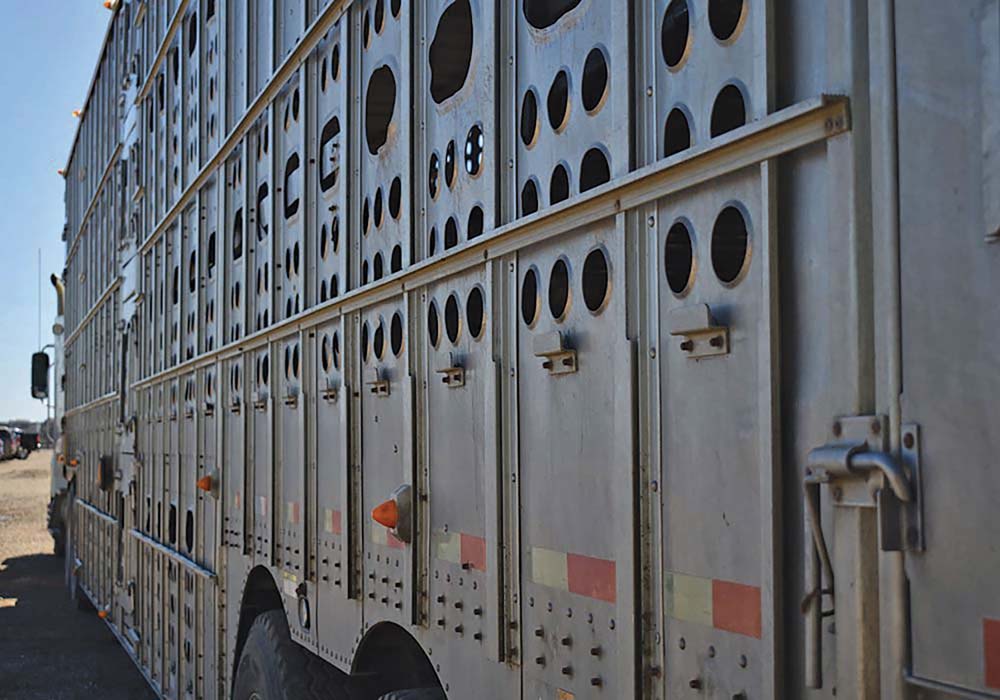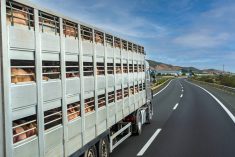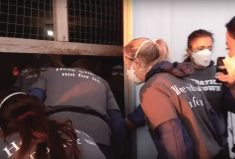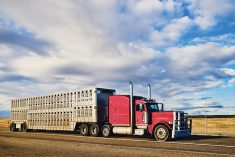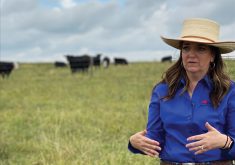To say the cattle sector is unhappy with changed transportation rules is putting it mildly.
Now, results from a third Beef Cattle Research Council (BCRC) study on transportation outcomes are feeding the ire.
BCRC science director Reynold Bergen said the study, summarized in a blog post titled “Strike three? Transport rest stops still don’t show a benefit for weaned calves”, echoed previous studies done by Agriculture and Agri-Food Canada researchers out of Lethbridge, Alta., since 2017.
Read Also

Finally getting paid for sustainable farming?
Alberta project says they might have a line on a workable ecosystem credit model to reward farmers for sustainability, and Manitoba might be next
“Science-wise, we know the answer now,” he said. “We know, with confidence, that providing a rest stop to feeder calves doesn’t provide them with any health or welfare or performance benefit.”
Why it matters: As the saga over livestock transportation regulations continues, a recent study illustrates different interpretations between the cattle sector and CFIA.
In 2019, the Canadian Food Inspection Agency (CFIA) published proposed regulatory changes to livestock hauling. Cattle would have to be unloaded and given food, eight hours of rest and water every 36 hours, compared to the previous standard of five hours of rest for every 48 hours on the trailer.
The CFIA said the changes would improve animal welfare and consumer trust, while industry advocates pointed to a 2007 Alberta study that said 99.9 per cent of cattle were already arriving at their destination in good condition. Other critics raised concerns around biosecurity at rest stops and the risk of injury during reloading.
Timing of the changes was another concern for the livestock sector. Groups including the Canadian Cattle Association pointed to the lack of established research that supported such a shift. They noted the federal government’s own research, done through AAFC, was incomplete, even as plans for the proposed changes moved forward.
The CFIA later announced a two-year grace period during which education rather than enforcement would be emphasized.
After that window closed last year, the CFIA offered another break for long-haulers. Enforcement would not be a priority for animals older than nine days, the agency said, as long as animal health outcomes were met and hauls were within four hours of the new maximum.
Preconditioning
BCRC studies suggest that preconditioning calves is better for animal health and performance before shipping, as opposed to rest stops during transit.
The most recent study — and the subject of the BCRC blog post — looked to quantify the impact of a mid-haul rest on both pre-conditioned and freshly weaned beef calves.
Of the 328 animals in the study, half were weaned, vaccinated, treated with antibiotics and for parasites, and spent three weeks before the trip getting accustomed to a backgrounding diet. The pre-conditioned and recently weaned calves were further split, with half of each group given an eight-hour rest 20 hours into the haul. After being reloaded, those animals spent another four to 15 hours in the trailer.
Animals that did not get a rest were still unloaded after 20 hours, but were assessed and then immediately put back in the trailer for the second leg.
The study tracked metrics including animal weight, temperature, signs of stress, trends in standing or lying, alertness, dehydration, muscle damage, infection or trauma, inflammation, immune response and feeding behaviour, both during the study and 28 days after the animals reached a feedlot.
Shorter trips did result in less fat breakdown and more eating in the first month at the feedlot, the study found, but a rest stop during longer trips did not measurably improve outcomes.
More striking for Bergen was evidence that rested but non-preconditioned calves may not benefit from feed during that eight-hour break.
Only 15 per cent of non-preconditioned calves approached the feed bunk during their rest, compared to 95 per cent of calves already adapted to that kind of feeding.
“The calves that had been preconditioned knew what a feed bunk was and they would eat,” Bergen said. “They also found that the freshly weaned calves didn’t, so my concern is that if you’ve got freshly weaned calves and you’re imposing an eight-hour feed, water and rest break on them, and they don’t know what the feed or water is, and they don’t eat or drink, the net effect is that it’s going to be an extra eight hours of not eating or drinking before they get to their destination.”
Freshly weaned calves had more weight gain in their first month in the feedlot, although Bergen argued that those calves started smaller and were nutritionally strained, so a quick gain is not unexpected.
“The preconditioned calves…they were growing, but they were growing at a steady rate,” he said. “The un-preconditioned calves were coming fresh off whatever pasture they were on, which was probably drying up at the end of the year, because this was southern Alberta, and they were weaned off cows whose milk production had been down.
“When animals are nutritionally deprived and then they’re put on good feed, they grow way more efficiently and way faster,” said Bergen.
That’s one reason feedlots are slow to pay premiums for preconditioned calves, he added.
The study found less inflammation, infection, trauma, muscle damage and fat breakdown in preconditioned groups, as well as more gut fill. Surprisingly, the preconditioned group showed more signs of stress than the freshly weaned calves, although Bergen noted the difference wasn’t statistically significant and might have been skewed because all calves came from the same operation and were not mixed as they would be at a commercial auction.
CFIA
The CFIA says it will review results of the study, but “the agency’s understanding from information available in the study summary on the Beef Cattle Research Council site is that the results are supporting the current maximum allowed interval without feed, water and rest for this class of cattle,” a spokesperson said.
The agency said the study showed “there were not negative outcomes or effects observed for the calves transported for 35 consecutive hours,” a conclusion that differs from the BCRC’s assessment.
“The only way I can see it that way is if I focus on the fact that the research didn’t say that rest stops were bad for cattle,” Bergen said. “So, in that sense, it doesn’t say that the regulations are misguided, but I don’t see how it actually supports them.”
The CFIA said there are no plans to review existing livestock transport regulations.
Older animals?
Bergen said results of the rest stop studies might have been different if they involved cull cows, which are among the more problematic categories when it comes to transportation outcomes.
He pointed to the often-cited 2007 Alberta study that found cull cows and weaned calves have more transportation issues.
He theorized that, while freshly weaned calves tended to ignore the feed bunker, experienced cull cows would be more likely to recognize the feed and have a better chance of benefiting from a mid-haul stop.
“The CFIA and the producers and the truckers want to see these cattle arriving at feedlots or auction marts or packing plants in good condition. Everyone wants that,” Bergen said. “We just need to figure out how the best way to keep doing that is.”


